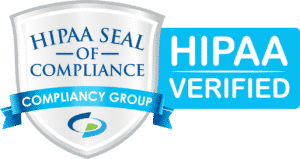HIPAA (Health Insurance Portability and Accountability Act) compliance is crucial for independent doctors who manage patient information. Compliance isn’t just about avoiding fines—it’s about protecting your patients’ identities, safeguarding your professional reputation, and preventing cyber breaches. However, achieving compliance can seem overwhelming for individual practitioners or solo clinics. This guide simplifies the process, breaking down essential HIPAA principles, step-by-step measures for compliance, and common missteps to avoid, with extra support from ComplianceChoice.com to keep you within compliance limits.
Why HIPAA Compliance Matters for Independent Doctors
HIPAA, established in 1996, was created to safeguard patient health information from unauthorized access and misuse. As an independent doctor, complying with HIPAA regulations is crucial to protect patient privacy, secure electronic health records, and minimize the risks associated with data breaches. HIPAA protects Protected Health Information (PHI), and as a healthcare provider, you must comply to:
- Protect Patient Privacy: HIPAA ensures that patient data remains confidential and secure.
- Avoid Fines and Legal Issues: Non-compliance can result in penalties ranging from thousands to millions of dollars.
- Build Patient Trust: Patients are more likely to feel confident when they know their sensitive information is protected.
- Prevent Cybersecurity Threats: With the rise of cyberattacks, HIPAA compliance helps safeguard electronic patient records.
Key HIPAA Rules Every Independent Doctor Must Follow
Understanding HIPAA rules is essential for independent doctors to protect patient information and avoid costly violations. Below are the key HIPAA rules you must follow to stay compliant:
1. HIPAA Privacy Rule
The Privacy Rule governs the use and disclosure of PHI. This includes information obtained during patient treatment, payment, or Healthcare Compliance Risk Assessment operations. As an independent doctor, you must provide patients with a Notice of Privacy Practices (NPP), outlining how their data will be used and their rights to access it. You must obtain patient consent to share their PHI with third parties, unless otherwise allowed by law.
2. HIPAA Security Rule
The Security Rule applies specifically to electronic Protected Health Information (ePHI). For doctors using Electronic Health Records (EHRs), it’s critical to implement appropriate safeguards—administrative, technical, and physical—to protect this information. This includes secure communications, encryption, minimal access to sensitive data, and regular updates on security software to combat cyber threats. You must also conduct risk assessments to identify and strengthen your security protocols.
3. HIPAA Breach Notification Rule
Despite best efforts, data breaches can occur. If PHI is disclosed without authorization, you must notify affected patients within 60 days of discovering the breach. If more than 500 patients are affected, you must also inform the Department of Health and Human Services (HHS) and the media. Failing to report a breach can result in severe fines and penalties.
4. HIPAA Enforcement Rule
The Enforcement Rule includes penalties for violations, ranging from $100 to $50,000 depending on the severity and intent. In cases of repeated violations, penalties can be much higher. Independent doctors should keep records of their compliance efforts, including staff training logs, security assessments, and data protection policies, to ensure they can demonstrate compliance if needed.
Step-by-Step Guide to Achieving HIPAA Compliance
Achieving HIPAA compliance may seem complex, but breaking it into manageable steps can make the process much easier for independent doctors. Follow this structured approach to safeguard patient data, meet legal requirements, and avoid costly penalties while maintaining trust and professionalism in your practice.
Step 1: Conduct a HIPAA Risk Assessment
A risk assessment is the foundation of HIPAA compliance. Evaluate your practice’s vulnerabilities, such as how PHI is collected, stored, and shared. Identifying potential security risks allows you to put safeguards in place before a breach occurs. The assessment should include reviewing your electronic record systems, office security, employee access to patient data, and communication methods.
Step 2: Implement Administrative Safeguards
Administrative safeguards ensure employees and third-party vendors handle PHI securely. As an independent doctor, you should:
- Appoint a HIPAA Compliance Officer to oversee policies.
- Develop written policies and procedures for data security practices.
- Train staff on HIPAA regulations, security best practices, and PHI handling.
- Restrict access to patient records based on job roles.
Step 3: Strengthen Physical Safeguards
Protecting physical access to PHI is just as important as securing digital data. You should:
- Store paper records in locked cabinets and restrict access.
- Use security cameras and alarm systems to monitor office spaces.
- Implement password-protected logins on computers used for patient records.
- Avoid leaving medical records open on unattended desks.
Step 4: Apply Technical Safeguards
Technical safeguards protect electronic PHI from cyber threats. As an independent doctor, you should:
- Use data encryption to protect patient information.
- Implement multi-factor authentication (MFA) for accessing electronic health records.
- Regularly update security software and firewalls to prevent hacking attempts.
- Conduct data backups to ensure that patient information is not lost due to system failures or cyberattacks.
Step 5: Sign Business Associate Agreements (BAAs)
If you work with third-party vendors (e.g., billing, transcription, IT services) who handle PHI, they must sign a Business Associate Agreement (BAA) to confirm they comply with HIPAA regulations. Failing to obtain BAAs can result in violations, even if the breach happens on the vendor’s side. Always ensure external service providers follow security protocols before sharing patient data with them.
Step 6: Create a HIPAA Breach Response Plan
Breaches can happen despite best efforts. A breach response plan helps you act quickly to mitigate damage. Your plan should include:
- Steps to contain the breach and prevent further exposure.
- A process for notifying affected patients and reporting the breach to HHS.
- Documentation of the breach’s cause and corrective actions to prevent future incidents.
Common HIPAA Compliance Mistakes to Avoid
Even the most diligent doctors can make mistakes that lead to HIPAA violations. Here are some common errors to avoid:
- Using unsecured email or text messaging to share PHI. Always use HIPAA-compliant communication tools.
- Not training staff regularly on HIPAA regulations. Untrained employees can mishandle patient data.
- Leaving patient records accessible in unsecured areas. Store paper records in locked cabinets, and protect electronic records with strong passwords.
- Ignoring cybersecurity updates. Failing to update security software can leave PHI vulnerable to breaches.
- Not having a disaster recovery plan. Cyberattacks or system failures can result in data loss. Always maintain secure backups.
How Compliance Choice Can Help
Navigating HIPAA compliance as an independent doctor can be time-consuming, but Compliance Choice simplifies the process. Our platform offers:
- HIPAA Compliance Training for doctors and staff.
- Risk Assessments to identify and address security vulnerabilities.
- Secure Communication Tools to protect patient data.
- Policy & Procedure Templates to help you ensure compliance with minimal effort.
- Breach Response Support to guide you through incident management.
Conclusion
HIPAA compliance is essential for independent doctors who manage patient data. By conducting risk assessments, implementing security measures, training staff, and securing communications, you can protect PHI and avoid penalties. For a hassle-free compliance solution, visit Compliance Choice and let us help you achieve HIPAA compliance with ease.




